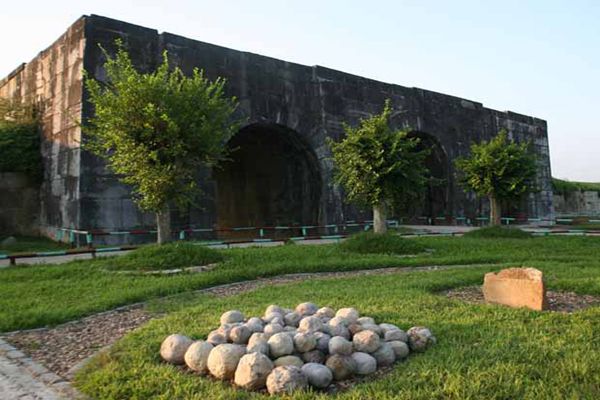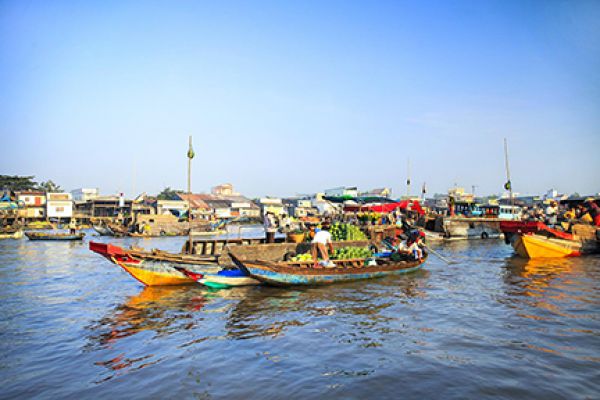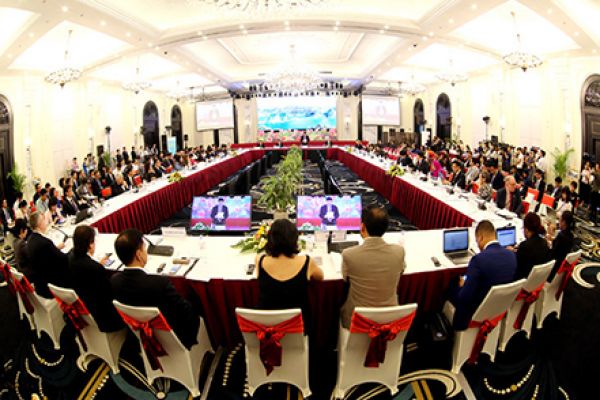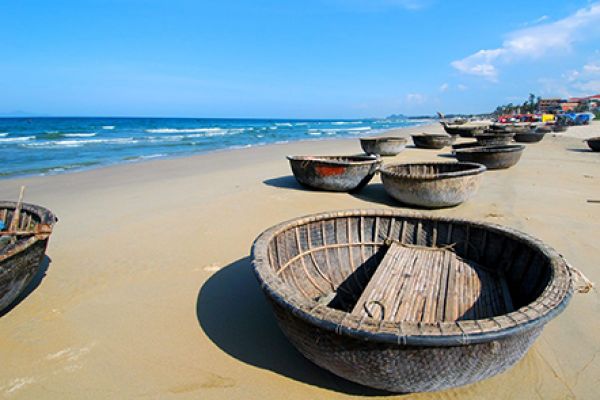Five Cham dancers straighten their dresses and walk onto the red carpet-covered stage. An audience awaits them, with cameras at the ready. Shyly, the young women place pottery jars on their heads and begin to move their limbs and bodies to the rhythm of the drumbeats. As the beats gain in volume, the dancing quickens, but the jars remain perfectly still on top of the women’s heads. The appreciative audience applauds. Some wander towards the stage and palace a donation in the small jar at the front.
The dance is part of an initiative to promote Cham culture and honour the origins of the stunning Cham tower complex of Po Nagar in Khanh Hoa province’s Nha Trang city. The site was once a sacred worshipping place for the fallen Cham civilization. It is believed that the site was used for ceremonial purposes as far back as the second century, but the towers were built between the 8th and 13th centuries.
One of the dancers, Y Sa, says the dance called Tinh lang gom (The Terracota Artisan’s Love), is a tribute to her hometown’s traditional craft of pottery production, in which labour and attachment to the native land are both honoured. Another song, Ben nuoc tinh yeu (Wharf of Love), celebrates the simple joys of the Cham people’s lifestyle.
All the dancers, aged between 19-22, hail from My Nghiep village in Ninh Thuan province’s Ninh Phuoc district. Legend has it that the village, called Caklaing in the Cham languages, was where a Cham king by the name of Poklong Garai made great contributions to the Cham civilisation, particularly in agricultural production, development and irrigation. During his reign, the Cham people enjoyed peace and prosperity.
Cham civilisation
Cham civilisation thrived in southern and central Vietnam, from approximately the 7th to the 13th century, before gradually declining.
Today, Cham communities can be found in coastal areas in the south of Vietnam and in some Mekong Delta provinces. They have two distinct religious communities Muslim (about 80 percent) and Hindu. Interestingly, while they share a common language and history, there is no intermarriage between the two groups. A small number of the Cham also follow Mahayana Buddhism.
There are a number of Cham structures still standing, including the My Son temple complex and Po Nagar. However, most visitors know very little about the civilisation. Over the past two years, Khanh Hoa province’s Landscape and Historical and Cultural Site Management Centre has invited the troupe to come to Po Nagar to perform traditional Cham art performances. Now the troupe presents an hour-long show of dances and songs.
Dance, dance, dance
According to Y Sa, most ethnic Cham girls practise dancing while they are very young.
“A girl’s dances are considered one of the most importance standards to measure her skills and natural disposition. My grandmother taught my mother and my mother taught me. I will then teach my daughter,” says a 20-year-old Cham dancer.
According to the complex’s management board, the Cham artists have drawn a lot of tourists to the ancient site.
“The dancers are great,” says Jonathan Anderson, a tourist from the US. “You get an idea of the Cham people’s cultural traits. I get a sense of the relationship between the traditional dancers and the towers.”
Lo Phu Bao, the band’s bugle player says his troupe wants to preserve Cham dancing and music.
“We are just farmers in our hometown, but we love singing and dancing. We don’t want this treasure to be lost,” he says.
Potters and weavers
Cham artisans also come to the towers to make pottery and weave brocades. Another native of My Nghiep village, To Hai Anh, a brocade weaver, says that her village used to live off making brocades, which were sold to other ethnic groups.
“It often takes nearly 20 stages to make a single brocade,” she says.
The pottery is said to be even more complicated. An artisan from Ninh Thuan province’s Bau Truc pottery village explains that the pottery is made by burning wood or straw.
“We don’t use kilns like many localities,” she adds.
Interestingly, most of the potters are women. The men are mostly just assistants. A craft worker explains that Cham society was a matriarchy and that this still influenced Cham people’s lifestyles today. Cham children usually take their mother’s surname and in general the mother’s clan is considered more important than the father’s. Cham women have the right to select their husbands and the women inherit their parents’ assets. After getting married, men will move into their wife’s house to live.
Bau Truc pottery village, about 10km south of Ninh Thuan’s Phan Rang city, is famous for its extraordinary pottery products. The techniques they use have been passed down from generation to generation, and today most households in Bau Truc are still engaged in the pottery business.
From household utensils such as bowls, vases and jars, to works of art such as souvenirs and statues, a Cham craft worker does not need a potter’s wheel, only an anvil and other rudimentary tools and moulds-and of course her skillful hands.










(84-63) 3 826042 – (84-63) 3 511142
No 54 Nguyen Dinh Chieu, Ham Tien Central Mui Ne Beach Binh Thuan Vietnam
523 To Hien Thanh District 10 Ho Chi Minh City Vietnam
Ha Long Halong City Quang Ninh Vietnam
A13 Hung Thong 2 Halong City Quang Ninh Vietnam




